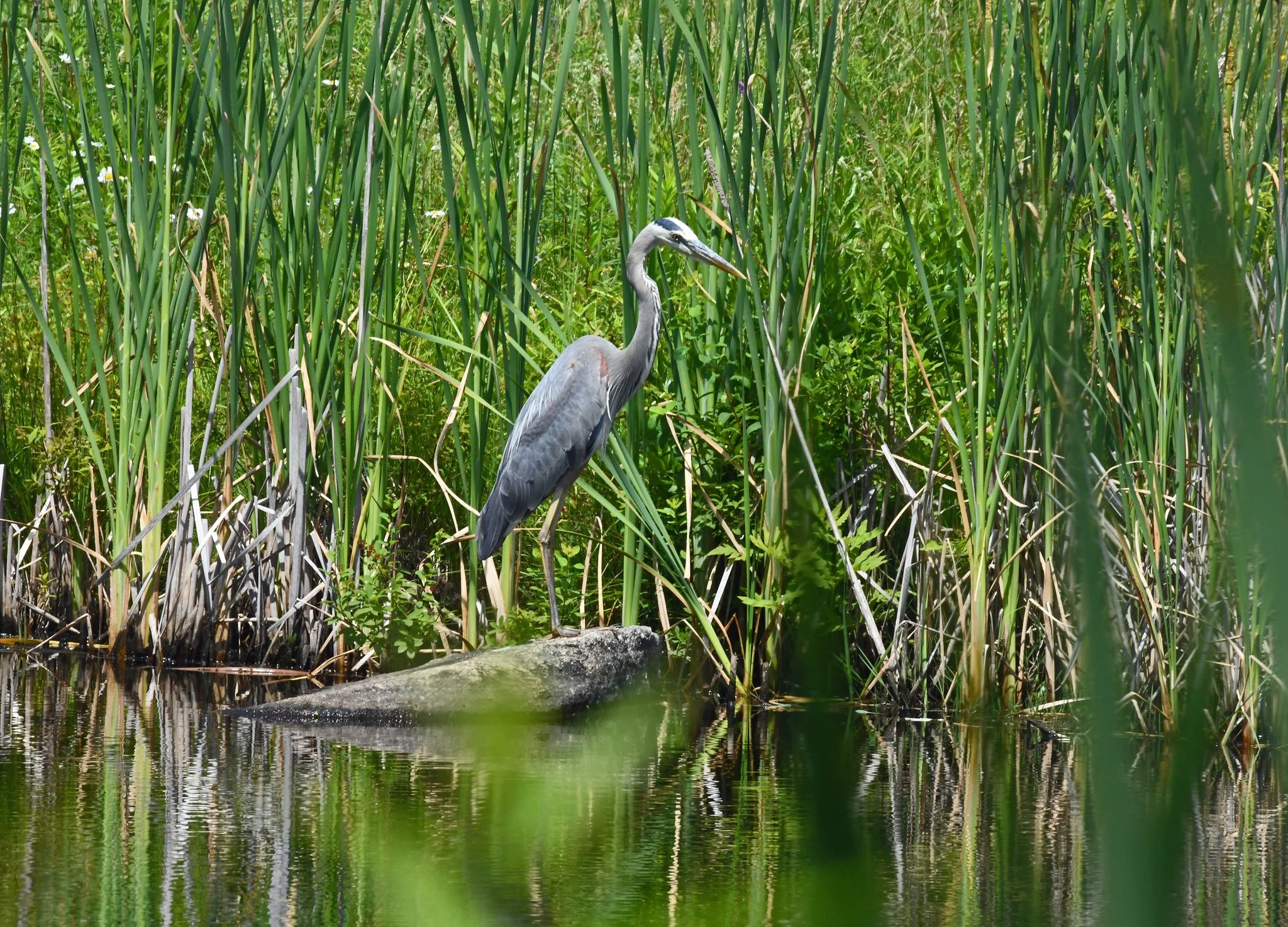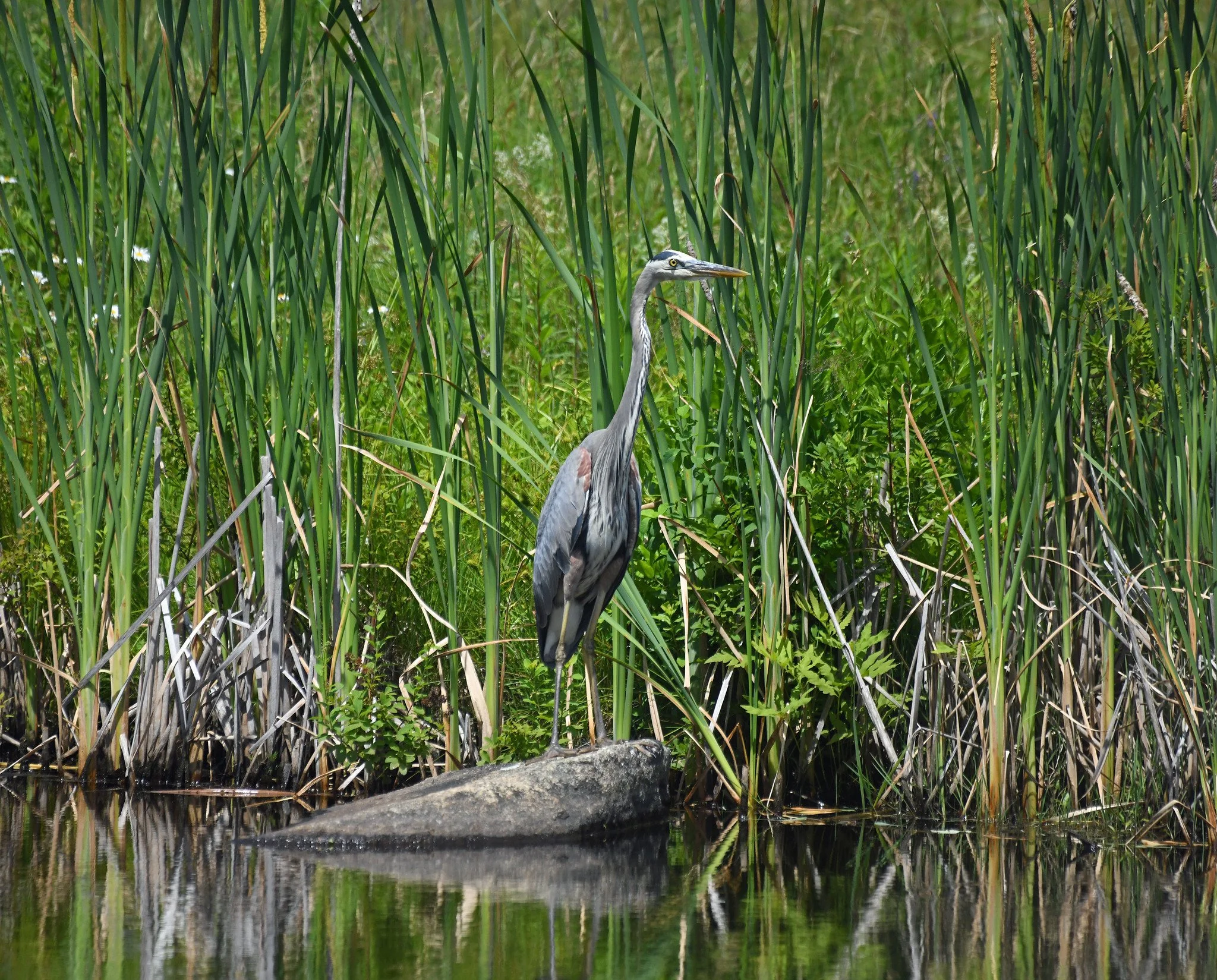My wife retained my investigative services to solve a mystery. As of mid-June, our ponds had the usual complement of what sounded like about a dozen green frogs here and there seemingly plucking their bass banjo strings randomly during most sunny days.
At the beginning of July, we started hearing and seeing fewer and fewer of these and then heard and saw none by July 5. The sound of that silence in summer was startling.
I inspected the scene thoroughly and found nothing suspicious at first. Then I set up a surveillance area in the cattails from which I could view the large pond without being detected easily. When I arrived on Sunday morning and peered through the green blades, there he was.
I said to my imaginary companion, “There’s your culprit, Watson! Note the small, shifty eyes, the big mouth, and rolled-up pants. Note that he’s trying to look like an idler in a place that is not for the idle. Elementary.”
Yes, the suspect is a great blue heron. He and his kind primarily eat fish and there are small fish in these ponds. (They’re mostly common and golden shiners, I think, that apparently have been brought in as eggs in the feathers and intestines of visiting ducks.) The fish attract great blues, which are not very particular about their diets. They’ll eat almost any moving body that they can get their beaks around, including insects, amphibians, reptiles, small mammals, and other birds.
Yet, GBHs are painfully skinny and leggy, a condition that is obvious when they’re not fluffing up or flexing their magnificent wings. They often are more than four feet tall, but they weigh only between four and six pounds.
(Images taken in Brooklin, Maine, on July 6, 2025. Sex assumed.)

